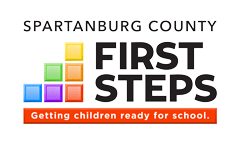

12 Ways to Support Language Development for Infants and Toddlers
October 18, 2016
12 Ways to Support Language Development for Infants and Toddlers
By: Julia Luckenbill
When you talk to your child, you support her language development. Think about what you are saying from your infant or toddler’s point of view. If she could talk, she might ask you…
1. When I point to something, tell me what it is. While you are telling me, look at it and point to it too.
2. Use a gesture along with the word you say, so that I can say it too. If you tell me it is time to eat, tap you lips. I can imitate the gesture and tell you when I’m hungry.
3. Talk to me about what you are doing. Tell me what will happen next, so I will know what to expect.
4. Talk to me about what I am doing. Using words to describe my actions and feelings helps me learn those words too.
5. Take turns chatting back and forth with me. Listen to what I am saying –then imitate my coos or babbles. If I’m older, you can reply to my questions and ask your own. I like open-ended questions that don’t have right or wrong answers.
6. Model bigger and better sentences. If I say, “Two cat,” you can say, “You have two cats on your shirt!” I learn a lot from you.
7. Sing with me. It’s easier to learn words in songs. I can learn about rhymes, the ABC song, the colors of my clothing, and the names of my friends.
8. Take me to the library. Read me a book, let me decide how you do it and when we are done. Let me mouth board books, handle them and decide which to explore. Check out the thrift store and buy me a few board books (wipe them with a damp cloth). At home, attach felt tabs to them, and I will be able to turn the pages more easily, all by myself.
9. Make books about me. When I see myself in a book, I will learn that books can be about things in my life.
10. Show me the words on things. When you point out words in books and on containers, I begin to understand how printed and spoken words are connected.
11. Be playful while I learn: I like to ask you what shape the cookie cutter alphabet has made. You can say, “You made the letter L,” or ask, “I wonder what letter you made?” It’s less fun to be asked, “What’s this?”
12. Give me time to learn and explore. There’s no rush to learn the names of colors, letters, and things. I will learn them in my own time.
Article Credit www.naeyc.org
